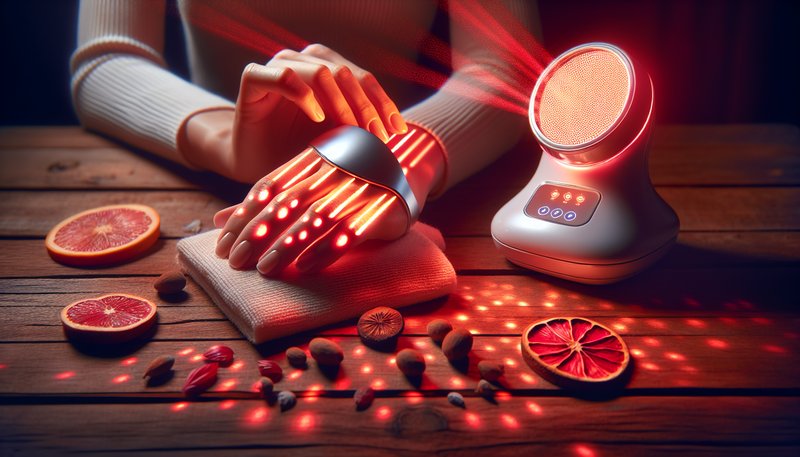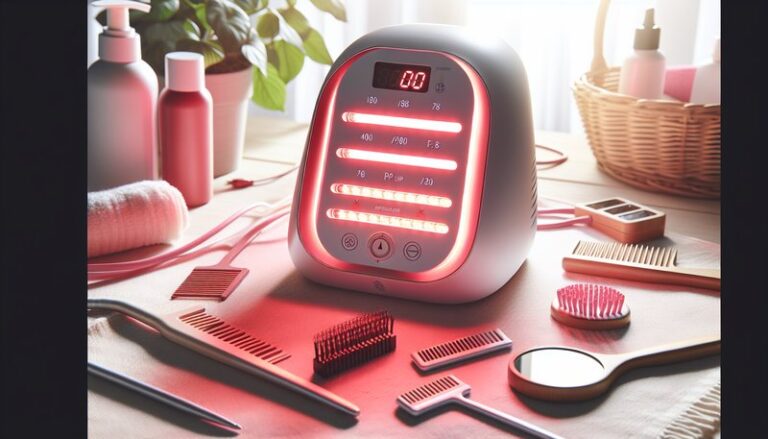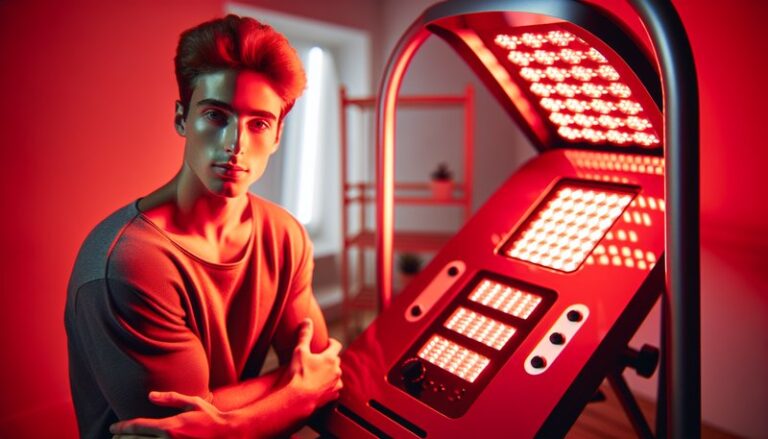Can Red Light Therapy Tighten Loose Skin?
Can Red Light Therapy Tighten Loose Skin?
Are you struggling with loose skin and seeking a non-invasive method to enhance your skin’s firmness?
This article delves into the effects of red light therapy on skin tightening, exploring its benefits, considerations, and alternatives. We’ll provide you with the information you need to determine whether this cutting-edge treatment is right for you.
Learn all about it in Does Red Light Therapy Eliminate Viruses?
Key Takeaways
- Red light therapy utilizes specific wavelengths of light to promote skin rejuvenation and may enhance collagen production.
- The therapy offers a non-invasive option with minimal side effects compared to surgical procedures.
- Considerations such as skin type, treatment frequency, and realistic expectations are essential before starting red light therapy.
What is Red Light Therapy?
Red light therapy (RLT) is a treatment that uses low-level wavelengths of red light to stimulate various physiological processes in the body. In dermatology, it is primarily used for stimulating collagen production, improving skin texture, and reducing signs of aging, including loose skin.
Originally developed for use in a clinical setting, RLT has gained popularity for at-home use, making it accessible for individuals seeking skin improvement without invasive methods.
Mechanism of Action
Red light therapy works by penetrating the skin layers to reach fibroblasts, the cells responsible for collagen production. Increased collagen can lead to improved elasticity and firmness, potentially tightening loose skin.
Clinical Applications
While red light therapy has shown promise in dermatology, its applications extend to wound healing, reducing inflammation, and alleviating pain. Many users turn to it for aesthetic purposes, particularly to enhance skin firmness.
What are the Benefits of Red Light Therapy?
Red light therapy offers a range of advantages that can enhance your skin health and help address the issue of loose skin.
Enhanced Collagen Production
This is perhaps the most significant benefit of RLT. Increased collagen production helps replenish this essential protein, vital for maintaining skin structure and elasticity. According to studies, regular exposure to red light can boost collagen levels, potentially improving skin tightness over time.
Non-invasive Skin Treatment
Unlike surgical options such as facelifts, red light therapy is non-invasive and painless. Many people experience little to no discomfort during sessions, which often last about 20 minutes, making it a convenient option for various lifestyles.
Minimal Side Effects
When used appropriately, red light therapy carries fewer risks and side effects than more invasive treatments. Most individuals can see positive results without downtime or complications associated with surgeries.
Improved Skin Texture and Tone
Beyond tightening, RLT can also enhance overall skin texture and even out skin tone, making it a multifaceted treatment option. Users may find that their skin looks healthier and more youthful after consistent use.
Is it Possible to Tighten Loose Skin with Red Light Therapy?
Yes, it is possible to tighten loose skin with red light therapy. However, several factors can influence the effectiveness of the treatment, and while many users report positive results, it is essential to understand that results can vary.
What are the Advantages of Using Red Light Therapy?
The use of red light therapy has several advantages contributing to its rising popularity among those looking to improve their skin.
Convenience
RLT treatments can easily fit into busy schedules. Many devices are designed for at-home use, allowing individuals to enjoy sessions without needing to visit a clinic.
For more, see When Does RLT Work?
Cost-Effective
Compared to surgical options, red light therapy can be more affordable. Over time, investing in a personal device may save money compared to ongoing clinic visits.
Complementary to Other Treatments
RLT can be used alongside other skin treatments such as chemical peels or microneedling. This combination can enhance results, allowing for an effective multi-pronged approach.
Scientific Support
Growing research supports the efficacy of red light therapy in various applications. Studies have documented positive outcomes for skin rejuvenation, grounding the procedure in scientific evidence.
What are the Disadvantages of Red Light Therapy?
While red light therapy is beneficial, it is essential to consider some disadvantages or limitations associated with its use.
Time Commitment
To see noticeable results, users often need to undergo several sessions over weeks or months. Individuals seeking quick results may find the timeline frustrating.
Variable Results
Not everyone will experience the same results with RLT. Factors such as skin type, age, and the severity of skin looseness can influence outcomes. It’s crucial to have realistic expectations.
Equipment Costs
While RLT can be cost-effective compared to surgery, high-quality red light therapy devices can still represent a significant upfront cost. Those only seeking immediate results may hesitate to invest.
What are the Things to Consider Before Starting Red Light Therapy?
Before embarking on a red light therapy journey, you should consider several important factors to ensure the best outcomes.
Skin Type and Condition
Understanding your skin type is essential. Consult with a dermatologist or skincare professional to determine if RLT is suitable for your specific skin conditions or concerns.
Treatment Frequency
To achieve desired results, red light therapy typically requires regular sessions. It’s essential to establish a treatment plan that fits your lifestyle and budget.
Realistic Expectations
Set achievable expectations for results. While RLT can offer tightening benefits, it may not replace surgical options for significant skin sagginess or aging.
Safety and Usage Instructions
Be informed about the proper use and safety precautions of the device you choose. Following guidelines properly will maximize effectiveness while minimizing risks.
What are the Alternatives to Red Light Therapy?
If red light therapy does not seem suitable, various alternatives can help address loose skin.
Ultrasound Therapy
Ultrasound therapy uses sound waves to stimulate collagen production, offering non-invasive skin tightening. Many patients experience lifting and firming effects after treatment.
Laser Treatments
Laser treatments can offer a more aggressive approach to tighten loose skin. These procedures often require a skilled practitioner and may involve some downtime.
Radiofrequency Treatments
Radiofrequency (RF) therapy uses heat to stimulate collagen production and tighten skin. RF devices are often heralded for their effectiveness and are available in both clinical and at-home options.
Surgical Procedures
For those seeking immediate and dramatic results, surgical procedures such as facelifts or neck lifts may be the most effective option. However, these come with higher risks and recovery times.
Conclusion: Is it Recommended to Try Red Light Therapy?
Red light therapy presents a promising solution for those looking to tighten loose skin without invasive methods. With its ability to promote collagen production and improve skin texture, it offers multiple potential benefits. However, considering individual differences, time commitments, and realistic outcomes is vital. For many, incorporating RLT into their skincare routine can be worthwhile, particularly when combined with other techniques for enhanced results.
Frequently Asked Questions
How long does it take to see results from red light therapy?
Results can vary, but most users might begin noticing improvements after several weeks of consistent sessions. Regular treatments, typically 2-3 times a week, are recommended for optimal outcomes.
Is red light therapy safe for all skin types?
Generally, red light therapy is considered safe for most skin types. However, those with specific skin conditions should consult their healthcare provider before starting treatment.
Can I perform red light therapy at home?
Yes, many devices are designed for home use, allowing individuals to enjoy the benefits of red light therapy conveniently. Ensure to choose a reputable device and follow instructions to maximize effectiveness.
How long should I use red light therapy for each session?
Most sessions last about 10 to 20 minutes. It’s crucial not to exceed recommended usage to prevent irritation or adverse effects.
Are there any side effects associated with red light therapy?
Red light therapy is generally well tolerated, with minimal side effects. Some users may experience temporary redness or irritation, but these symptoms typically resolve quickly.
By understanding the ins and outs of red light therapy, you can make a more informed decision about its potential to help tighten loose skin.






